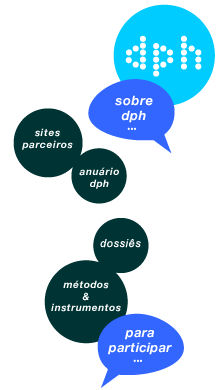On 23 and 24 November 1994, the marine fishing industry of India, spread across nine maritime states and covering a coastline of over 6,000-km, came to a virtual standstill. During these two days nearly one million people struck work. They stayed away from their work at sea, in processing plants and in markets. This was a symbolic act of protest against government policies permitting joint ventures almost free access to the fish in the Indian Exclusive Economic Zone (EEZ). Significantly, a great many fish consumers- estimated at nearly 300 million- also consciously chose a fish-free diet on those days.The strike was organised by the National Fisheries Action Committee Against Joint Ventures (NFACAJV), spearheaded by the National Fishworkers’ Forum (NFF), which is the federation of small-scale, artisanal fishworkers’ unions of the various maritime states in India.It was in response to the decision of the Indian Government to open up the EEZ to joint ventures between foreign and Indian companies, as part of the post-1992 process of liberalising the economy. The economic rationale was that since these ventures were 100 per cent export-oriented, they would augment foreign exchange earnings. Till early-1995 about 170 licenses, involving 800 vessels were said to have been issued by the government. The decision to allow joint ventures was made at the highest levels within the government. However, little effort was made to examine its viability or its impact on the country’s fish economy. To begin with the decision was not based on reliable estimates of the living marine wealth of the country. Further, while some of the later estimates indicated that about 42 per cent of marine resources were in the offshore zone (50 to over 500 m), a little highlighted fact was the low density of offshore resources, making them unsuited to large-scale commercial exploitation. Moreover, as much as 48 per cent of the resource was estimated as of `low’, and 38 per cent as of `very low’, value. Also, post-1985 efforts to develop the national capacity for `deep-sea fishing’ had already met with failure. Most of the 180 or so deep-sea vessels had toted up huge losses. A subsequent FAO study for the Association of Indian Fishery Industries and the Government of India identified, among other things, the over-capacity of the deep-sea fleet in the main shrimp fishery and the absence of commercially valuable alternative fish resources (other than shrimp), as important reasons for the losses being incurred.Given the status of offshore fishery resources and the history of deep-sea fishing in India after 1985, the decision to allow foreign investors in Indian waters was inexplicable. Part of the reason, however, seemed to have been related to the crisis being experienced in fisheries the world over. Loss making distant water fishing vessels were looking for a new lease of life, and the Indian Ocean was considered one of the least exploited oceans. The implications for the artisanal and other sub-sectors, of allowing joint ventures, were ignored by the government. For example, the majority of licenses were granted for operations along the Western coast. While this was considered one of the most productive regions of the Indian EEZ, this was also the region with the highest density of fishers, traditionally dependent on fishing for a livelihood.It was feared that the activities of the joint-venture vessels would have damaging, and often unknown, consequences on fish resources. The livelihood and survival of artisanal and other fishers would be jeopardised, as fish catches would decline. At the same time, local food security would be compromised as fish catches ended up as exports. It is not surprising that owners of small mechanised trawlers and operators of export processing facilities supported protests by artisanal fishers. The earlier animosity between the artisanal fishers and mechanised trawlers was suspended, as they came together in a common cause.
Palavras-chave
pesca, organização de pescadores, conflito
, Índia
Comentários
An open-door policy for joint-ventures has globally proven to benefit only a handful of financiers and merchants. It has failed to create independent and genuine national fisheries enterprises. In a country like India, with a rich maritime fishing tradition, a skilled and enterprising fishing community and a strong technological base, the strategy should be to develop the national industry. A careful and selective choice of joint-venture collaborations, where the nature of investments made is based on national priorities and needs, by investors with a good track record, is what is needed. Decisions to allow joint ventures must be made by an `umbrella’ body, which represents the interests of all the stakeholders in the fishery, including the consumers. It is the role of the State to protect the interests of its fishery sector and to work towards the sustainable management of fishery resources, keeping in mind social, ecological and economic aspects, as well as the principle of inter-generational equity. Granting indiscriminate access to the resources of the EEZ under joint venture arrangements is likely to prove detrimental to the domestic fishing industry.
Fonte
Artigos e dossiês
KURIEN,John, Bad custodian of the seas in. Samudra Report, 1995/04, 12

ICSF (International Collective in Support of Fishworkers) - 27 College Road, Chennai 600006, INDIA - Tel. (91) 44-2827 5303 - Fax (91) 44-2825 4457 - Índia - www.icsf.net - icsf (@) icsf.net



